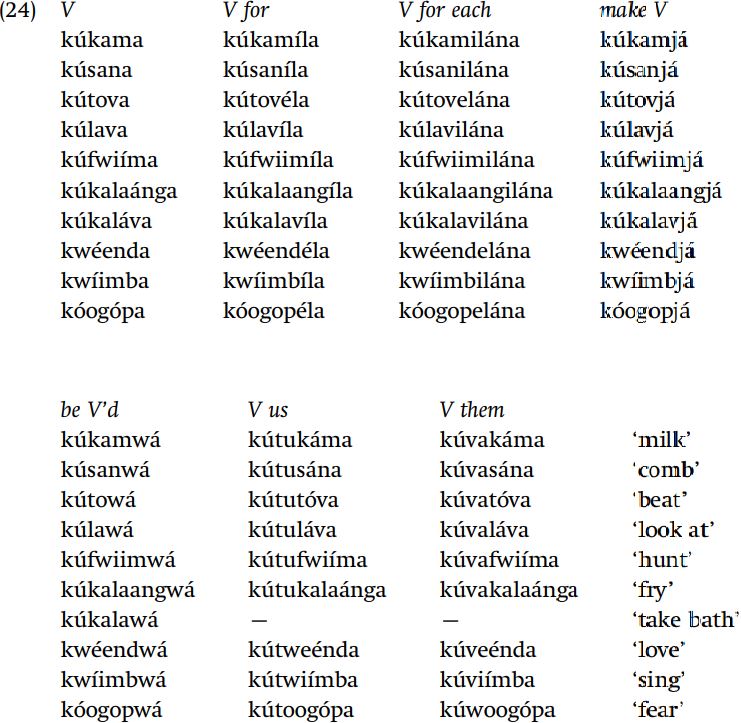

Grammar


Tenses


Present

Present Simple

Present Continuous

Present Perfect

Present Perfect Continuous


Past

Past Simple

Past Continuous

Past Perfect

Past Perfect Continuous


Future

Future Simple

Future Continuous

Future Perfect

Future Perfect Continuous


Parts Of Speech


Nouns

Countable and uncountable nouns

Verbal nouns

Singular and Plural nouns

Proper nouns

Nouns gender

Nouns definition

Concrete nouns

Abstract nouns

Common nouns

Collective nouns

Definition Of Nouns

Animate and Inanimate nouns

Nouns


Verbs

Stative and dynamic verbs

Finite and nonfinite verbs

To be verbs

Transitive and intransitive verbs

Auxiliary verbs

Modal verbs

Regular and irregular verbs

Action verbs

Verbs


Adverbs

Relative adverbs

Interrogative adverbs

Adverbs of time

Adverbs of place

Adverbs of reason

Adverbs of quantity

Adverbs of manner

Adverbs of frequency

Adverbs of affirmation

Adverbs


Adjectives

Quantitative adjective

Proper adjective

Possessive adjective

Numeral adjective

Interrogative adjective

Distributive adjective

Descriptive adjective

Demonstrative adjective


Pronouns

Subject pronoun

Relative pronoun

Reflexive pronoun

Reciprocal pronoun

Possessive pronoun

Personal pronoun

Interrogative pronoun

Indefinite pronoun

Emphatic pronoun

Distributive pronoun

Demonstrative pronoun

Pronouns


Pre Position


Preposition by function

Time preposition

Reason preposition

Possession preposition

Place preposition

Phrases preposition

Origin preposition

Measure preposition

Direction preposition

Contrast preposition

Agent preposition


Preposition by construction

Simple preposition

Phrase preposition

Double preposition

Compound preposition

prepositions


Conjunctions

Subordinating conjunction

Correlative conjunction

Coordinating conjunction

Conjunctive adverbs

conjunctions


Interjections

Express calling interjection

Phrases

Sentences


Grammar Rules

Passive and Active

Preference

Requests and offers

wishes

Be used to

Some and any

Could have done

Describing people

Giving advices

Possession

Comparative and superlative

Giving Reason

Making Suggestions

Apologizing

Forming questions

Since and for

Directions

Obligation

Adverbials

invitation

Articles

Imaginary condition

Zero conditional

First conditional

Second conditional

Third conditional

Reported speech

Demonstratives

Determiners


Linguistics

Phonetics

Phonology

Linguistics fields

Syntax

Morphology

Semantics

pragmatics

History

Writing

Grammar

Phonetics and Phonology

Semiotics


Reading Comprehension

Elementary

Intermediate

Advanced


Teaching Methods

Teaching Strategies

Assessment
Extending the data
المؤلف:
David Odden
المصدر:
Introducing Phonology
الجزء والصفحة:
161-6
2-4-2022
1530
Extending the data
Verbs are subject to these same rules, as some additional data will show, and an analysis of verbs will provide additional support for aspects of this analysis. Hehe is a tone language, and while we have not been concerned with accounting for tone (and have not marked tones), in the following data, tones are marked, and can be predicted by rule. In analyzing these data, we want to account for the placement of the high tone (H), which is marked with an acute accent.

The morphology. These data indicate that all verbs begin with kú or something derivable from /kú/ by the rules already motivated, thus we assume that kú- is an inflectional prefix. In addition, all verbs end with the vowel a, which is probably a morpheme since it is unlikely that every root would end in exactly the same vowel. The stem of the word for ‘milk’ is probably -kam-. Various grammatical relations are expressed by suffixes standing between the stem and the suffix -a, such as -il- ‘for,’ -an- ‘each other,’ -j- ‘make,’ -w- ‘passive’: the objects ‘us’ and ‘them’ are marked by the prefixes -tu- and -va- between the prefix kú and the verb stem.
Phonological rules. Looking at the last three roots, which are vowel-initial, the prefixes kú-, tu-, and va- are subject to the rules motivated on the basis of nouns, where /u/ becomes [w] before a vowel, but deletes after a consonant and before a round vowel (so, /ku-oogopa/ ! kwoogopa ! [kóogópa]); the sequence vo becomes wo (/ku-va-oogopa/ ! kuvoogopa ! [kúwoogópa]). The change of /v/ to w is also seen in examples such as kútowá and kúlawá, coming (apparently) from /ku-tov-w-a/ and /ku-lav-w-a/.
The rule of v-rounding would derive kútowwá and kúlawwá, and the actual phonetic forms can be accounted for based on that intermediate form by Glide Degemination.
One additional segmental process of vowel harmony is motivated by the above examples. The benefactive suffix retains its underlying high vowel in forms such as kúkam-íl-a, kúsan-íl-a, and kúfwiim-íl-a, but that vowel assimilates in height to a preceding mid vowel in examples such as kútov-él-a, kwéend-él-a, and kóogop-él-a. This motivates the following vowel harmony rule:

Regarding tone, most examples have an H tone on the second-to-last vowel of the word (this may be the second part of a long vowel in the penultimate syllable, or the only vowel of a short penultimate syllable), which can be accounted for by the following rule.

In some verbs, this H is missing – see kúkama, kúsana, kútova. Applying this tone assignment rule to these forms would result in outputs such as *kúkáma, *kúsána, *kútóva, with H tones on adjacent vowels. Since our examples contain no cases of consecutive H-toned vowels, we may assume a rule along the following lines.

What about the columns with the suffixes -j- ‘make’ and -w- ‘passive,’ which have word-final H, not penult H? We expect *kúkalaángwa. But if these two suffixes are underlyingly i and u, then the underlying form of kúkalaangwá would be /kúkalaang-u-a/. H tone would be assigned to the penultimate vowel under that assumption, giving kúkalaangúa. However, we already know that there is a rule of glide formation which would turn u and i into w and y before vowels, a rule which has obviously applied in these forms. Since only syllabic elements can bear tones, the tone on the penultimate vowel apparently shifts to the final syllable, where it can be pronounced.
 الاكثر قراءة في Phonology
الاكثر قراءة في Phonology
 اخر الاخبار
اخر الاخبار
اخبار العتبة العباسية المقدسة

الآخبار الصحية















 قسم الشؤون الفكرية يصدر كتاباً يوثق تاريخ السدانة في العتبة العباسية المقدسة
قسم الشؤون الفكرية يصدر كتاباً يوثق تاريخ السدانة في العتبة العباسية المقدسة "المهمة".. إصدار قصصي يوثّق القصص الفائزة في مسابقة فتوى الدفاع المقدسة للقصة القصيرة
"المهمة".. إصدار قصصي يوثّق القصص الفائزة في مسابقة فتوى الدفاع المقدسة للقصة القصيرة (نوافذ).. إصدار أدبي يوثق القصص الفائزة في مسابقة الإمام العسكري (عليه السلام)
(نوافذ).. إصدار أدبي يوثق القصص الفائزة في مسابقة الإمام العسكري (عليه السلام)


















